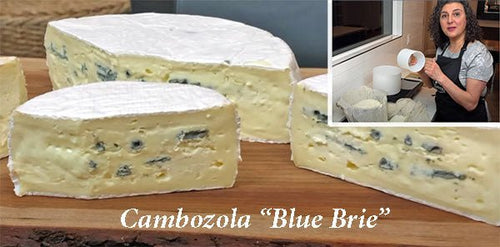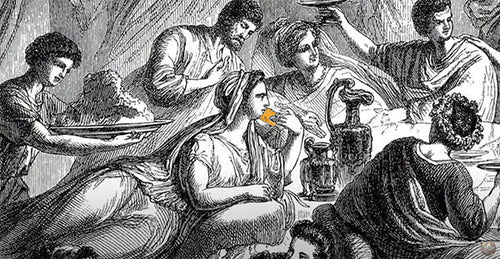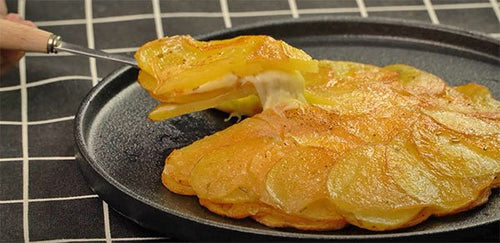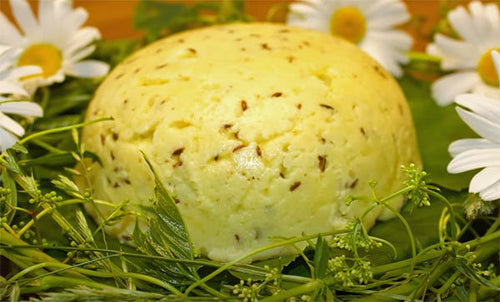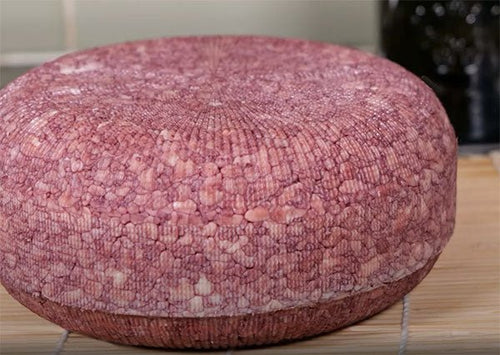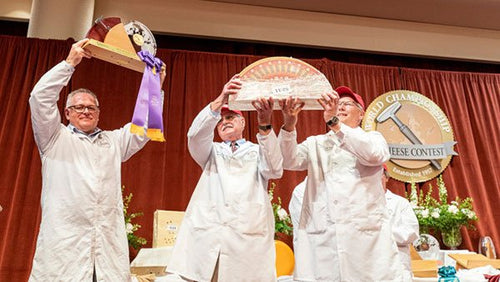Cheese Making Recipe of the Month
Yogurt Recipe
Here is where you will find the answers to all of your questions on yogurt making at home.
- What is Yogurt?
- Can I save money making my own?
- Which Yogurt culture to choose?
- How do I make Yogurt?
- And much more!
CHEESE TIPS FOR EWE
Yogurt Questions ???
Q. I have ordered some yogurt cultures. Can I save some fresh yogurt made from these to use as starter for future batches? If so how long can I keep doing it safely?
A. This will work with about 1-2 tbls of yogurt per quart but a lot depends on how you ripen the yogurt. The cultures are of two strains and the balance of successive batches depends on how much acid you produce in each batch. This will be controlled by temp and time of ripening. The longer/warmer you ripen the more acidic the yogurt will be and successive batches will become even more acidic. The number of times you can do this will depend on how much acid you like. I normally see 4-8 times here.
There should be no health issues.
The specific yogurt cultures have converted most of the lactose so there is not much for other bacteria to live on.
Q. Yesterday I made Bulgarian Yogurt using the Bread Proofing function of my oven. After ten hours it looked great. However, I got busy and turned off the oven and forgot to take the yogurt out of the oven. So, the yogurt set out at room temp for an additional ten to eleven hours. I've put the yogurt in the fridge. Is the yogurt still good to eat after sitting out for so long?
A. Your yogurt should be safe since the yogurt culture has converted most of the sugars in the milk to acid and made it quite unfriendly to other bacteria. However, this extended time probably has made the yogurt much more acidic than you intended. The key here is to get the yogurt culture to complete its work and then move as quickly as possible to a cold space to slow and stop its activity. This way you will get a fine curd and not overly acid yogurt.
Q. I made yogurt using your (Y5) culture. I have been using this culture along with many others for about three years now with wonderful success. For the first time I have pink spots on top of my yogurt. Can you tell me why? Is it bad or can I skim the top off and use the rest?
I use raw whole milk and only warm it to 80 degrees then add culture, bottle in quart jars, and place them in a warm cooler for 36 to 48 hours.
A. I do notice your yogurt process but truthfully this is not the way it originated or is currently practiced at it's source in eastern Europe. It should be heated to 185F and held for 20-30 minutes to take advantage of the whey proteins. It is then cooled to the target temp of 105-116F. 80F is on the VERY low side of where these types of cultures work (optimum is 108-112F). Your process will not convert enough lactose to lactic acid and the final yogurt will contain more moisture with a lower acid. This is why the mold has grown here. To be on the safe side I would not consume that yogurt.
I would not say your process is a safe one since the low temp is not in the optimum range for the chosen culture and this leaves an opening for less desireable bacteria to establish themselves and dominate.
Why not preserve the natural cultures of the milk by making fresh cheese at lower temps and take advantage of the yogurt benefits as they were originally practiced?
Have a cheese making question, we're here for you: info@cheesemaking.com
Cheese Making in Brooklyn
Wow! What a cheese cave!
Always keep it cool
His collection of cheese books
Mold ripened cheeses
Jos designed and built cheese press
A great ongoing record of a new cheese makers adventures
I first heard from Johannes in early April of 2009. By the scope of his questions I quickly realized that here was an individual not afraid to try new things and, even better, not afraid to make a few mistakes. More importantly, he knew to pay attention to those mistakes and to search out the reasons behind them.
From Johannes Vulto:
I started cheese making a year ago and found it very exciting and intriguing. I jumped right in and fully embraced the process and all its aspects. Now I am dreaming of becoming a full time artisanal cheese maker and am currently investigating whether setting up a small cheese plant on our property in upstate New York is a viable idea.
Thank you for your nice comments, indeed I like to make traditional style cheeses and experiment within. Being Dutch, I was brought up on cheese, mainly bland to medium Gouda. I have yet to make a good Gouda.
With all the silage being fed and the possibility of too many coliforms in the milk, all my Gouda attempts have resulted in gassy cheeses. Last night I read in a Dutch cheese book how most of the Dutch cheese is being made with saltpeter to prevent the gas formation.
Makes sense to me now. I remember the large piles of silage covered with old tires at every farm..
News From Fellow Cheese Makers
Cheese making in Mali, West Africa
I am a Peace Corps volunteer currently serving my second year in Mali, West Africa. One of the most difficult things about being a volunteer here is the lack of good food, especially the lack of cheese. Despite the availability of raw milk here, Malians don't know how to make cheese. When I read Barbara Kingsolver's book, "Animal, Vegetable, Miracle," I ordered your Mozzarella and Ricotta kit the next time I went to town (not an easy feat, considering I live in a small village about 7 hours from the nearest city). Now, once a week my husband (also a volunteer) and I make tasty cheese and share it with villagers. We also have the hard cheese kit and have been trying to convince other volunteers to purchase your supplies. Unfortunately, the cost of shipping is prohibitive for many volunteers.
I know some have ordered the kit online and had it sent to their parents' house, so Mom and Dad can foot the bill for shipping to Africa! This July we will receive another 80 volunteers in Mali, to add to the already 150 volunteers currently serving. I was hoping to do a cheese-making demonstration to the new volunteers, and I was wondering if you would be willing to offer a Peace Corps discount on your Mozzarella kit or on shipping to make it more affordable for volunteers (we really are "volunteers": we receive a monthly living allowance of $250 to pay for rent, transportation, and food, but no salary, so to speak)? I know many volunteers would love the chance to make cheese in their villages, if only it weren't so expensive for them.
Best Wishes,
Nicole Wallace
Nicoles letter is similar to many we receive from folks working in remote areas of the world. Regions milk is plentiful but the essential ingredients are not and the know-how has perhaps been lost in the past. We are thrilled to see our customers taking the lead and bringing cheesemaking to these areas.
Thrilled with making our first Mozzarella!
I've been making Mozzarella with the help of your cheese making kit for about 4 weeks now. We've had the best caprese salad and pizza ever! Thanks so much. I am going to make two batches today for a party we're attending tomorrow night, and with a trip to Farmers Market this evening, my appetizer commitment is taken care of. I am fortunate enough to live on a dairy farm, so I have no problem getting milk. My husband walks 100 yards down the road and gets it from the tank. We aren't organic, but we don't use growth hormones or antibiotics in our milking string. I've gotten many compliments on the cheese.
One question, if you have time to answer: I've turned a few batches into bocconcini balls, but the raw parsley and garlic is a bit harsh. Any suggestions? I am looking forward to making other varieties as I have the time (I've got two little girls who also love your cheese!).
In adding herbs and other flavors to mozzarella it is easy to overpower the subtle flavors of the milk. Both garlic and parsley can be a bit high in flavor, so using less would be better. Also the roasted garlic would have a more mellow flavor to meld with the mozzarella.
Julie Bakker
Another Happy Mom
Hello from Rincon!
Just wanted to say "Hola"and "Gracias" for helping my family get me the perfect gift for Mother's Day. We had my parents over and we made our first homemade cheese together. So easy and delicious- just like what we had in Rome, Italy! You've created another convert. Can't wait to try my hand at other cheeses.
Thanks so much.
Pam Smith
Milk Resources
We are continuing to compile a list of Local Milks for cheese making and where you will be able to find them in your area. Please feel free to let us know of your favorite 'good milks' and the cheeses you have made from them.
Thank you and Enjoy.
Please send your cheese making news & photos to: moosletter@cheesemaking.com
























































































